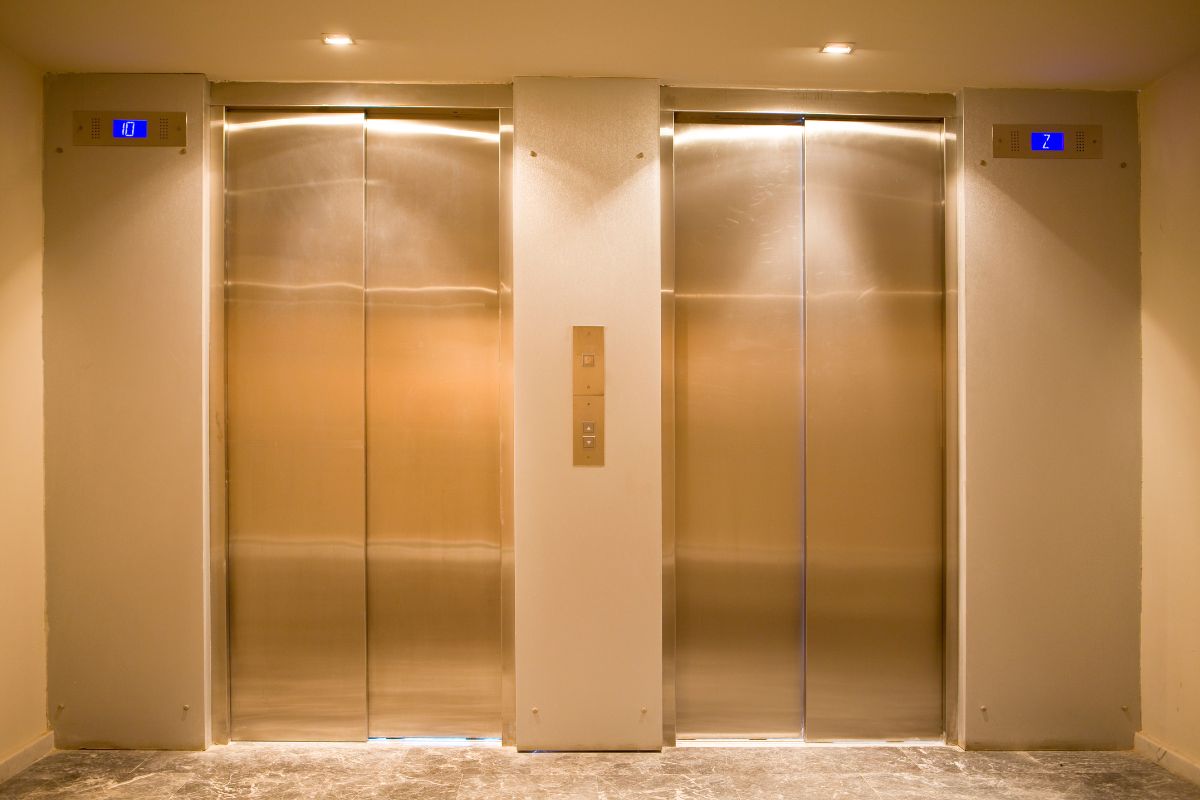

Elevators are a vital component of any modern building, providing seamless vertical transportation for occupants and goods. As buildings undergo renovations or new constructions take place, elevators are often exposed to potential damage from construction trades, which can lead to costly repairs and operational downtime. To protect elevators from construction trade damage, proactive measures must be taken. In this blog, we’ll explore some proven strategies to safeguard elevators during construction, ensuring their continued functionality and longevity.
Elevators are frequently constructed of steel or aluminium, with decorative panels made of marble, wood, tile, or other materials. There are two facts about elevators that are almost always certain:
THEY WILL BE USED – This is inevitable given that it is one of the most practical ways to move people and goods from bottom to top and top to bottom.
THEY ARE NOT CHEAP TO REPAIR IF broken – Let’s face it; if an elevator’s nice, smooth, high-gloss outer panel is broken, fixing the problem will usually be expensive.
In the bustling realm of urban development and progress, where towering skyscrapers and innovative infrastructure take form, a silent sentinel stands tall, vigilant and resolute – the Elevator, a true marvel of modern engineering that carries us effortlessly to soaring heights and provides us with the gift of efficient mobility.
Yet, amid the symphony of construction activity that surrounds these vertical lifelines, a hitherto overlooked challenge emerges – how can we shield these masterpieces of vertical transportation from the hazards and perils of the very progress they facilitate?
Imagine these specialists weaving an invisible tapestry of protection around these iconic lifts, their meticulous planning akin to an intricate dance that anticipates every possible scenario – be it the thunderous vibrations of heavy machinery, the swirling dust clouds that sweep the construction site, or the inadvertent mishaps that threaten to leave indelible marks.
Beyond the realm of brute strength, the protectors of elevators harness the power of communication and cooperation. They bridge the gap between the architects of grand design and the craftsmen who bring it to life. Together, they form a cohesive alliance, each member contributing their unique expertise to preserve the sacred pathways that connect floors and transcend human limitations.
As construction roars on, the work of these unsung heroes remains hidden from the casual observer, and yet, it is this very obscurity that bears testimony to their triumph. When the final curtain falls on the grand spectacle of urban metamorphosis, the elevators stand tall and proud, a testament to the success of their silent guardians.
Table of Contents
Effective communication and coordination are the cornerstones for safeguard elevators during construction. Early planning and collaboration between the construction team and elevator maintenance professionals are essential. Conduct pre-construction meetings to discuss the project scope, potential risks to elevators, and the measures needed to mitigate these risks.
Physical protection is crucial in shielding elevators from potential damage. Install protective barriers around the elevator entrances and interiors. Heavy-duty plywood, plastic sheeting, or specialized elevator protection panels can act as shields against debris, dust, and accidental impacts. These barriers should be securely fastened and regularly inspected throughout the construction process.
If the building’s size and configuration allow for it, consider temporarily shutting down and isolating the elevator from the construction area. By doing so, you eliminate the risk of construction trades inadvertently causing damage while ensuring the safety of both the workers and the elevator itself.
Elevator wrapping is an effective way to safeguard elevators from construction-related damage. Wrapping the elevator car and doors with protective materials, such as heavy-duty plastic, can prevent scratches, dings, and other surface damage. Moreover, elevator wrapping presents an opportunity to showcase project branding, enhancing the aesthetics of the construction site.
Construction sites are notorious for generating dust and debris, which can infiltrate elevator shafts and machinery. Regular cleaning and maintenance of elevator components during the construction period are crucial. Elevator technicians should be scheduled to inspect and clean the elevator machinery, control panels, and sensors to ensure optimal performance.
Deploying surveillance cameras near elevators can be a deterrent against reckless behaviour and vandalism. It also allows for the timely detection of any unauthorized access or potential damage to the elevator. Monitoring elevator activity during construction can help pinpoint the source of any issues that arise and enable swift action to address them.
After the construction work is completed, conduct a thorough inspection of the elevators to identify any signs of damage or operational issues. Address any problems promptly to prevent long-term consequences that could compromise elevator performance and safety.
Above all, engaging experienced and qualified elevator contractors is essential. Choose a reputable elevator service company with a track record of successfully protecting elevators during construction. Such professionals understand the unique challenges presented by construction sites and can provide tailored solutions to safeguard elevators effectively.
Protecting elevators from construction trade damage is a responsibility that should not be underestimated. Taking proactive steps, such as implementing protective barriers, coordinating with the construction team, and engaging professional elevator contractors, ensures that elevators remain safe and operational throughout the construction process. By prioritizing elevator protection, building owners can avoid costly repairs, reduce downtime, and uphold the safety and comfort of building occupants.
Sign up to receive our email, delivering the latest stories straight to your inbox.
